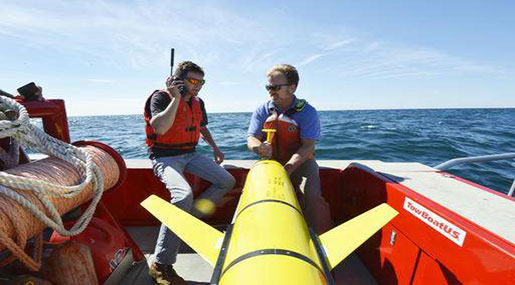
Scientists Use Undersea Drones to Help Predict Hurricanes

Local Editor
As Hermine worked its way up the East Coast, scientists deployed several underwater drones they say will help them better understand what sustains and strengthens hurricanes and tropical storms - and ultimately better protect life and property.

The ocean gliders, as they are called, resemble yellow-winged torpedoes. They were released into the ocean roughly 100 miles offshore at the continental shelf, where at depths of 100 to 300 feet they measured water temperatures, salinity and density before, during and even after the storm.
Traditional research aircraft that are flown into the eye of a hurricane to take measurements can't get a read on any of that.
"One reason hurricanes are so hard to forecast is that intensity depends on conditions ahead of and below the storm," said Glen Gawarkiewicz, an oceanographer at the Woods Hole Oceanographic Institution in Falmouth, Massachusetts.
The robotic gliders, which are remotely controlled from the shore, can delve into the heart of the storm where it's too dangerous or impractical to send people, and then feed real-time information via satellite to scientists safe on land.
The gliders have been in use for several years now, but this is the third year of the coordinated program funded by the NOAA office of Oceanic and Atmospheric Research.
Gawarkiewicz said the latest deployments will give a "look at the continental shelf system in a more holistic manner."
Woods Hole works on the federally funded program in conjunction with the University of Maine, the University of Maryland, Rutgers University and the Gulf of Maine Research Institute.
The most important thing the gliders collect is water temperature, an important tool in predicting storm intensity, Gawarkiewicz said.
If the storm churns up colder water from the deep ocean, it will decrease in intensity.
The data will help forecasters better predict future storms, and perhaps better warn coastal residents when a monster hurricane is about to hit.
Source: News Agencies, Edited by website team
Comments
- Related News



